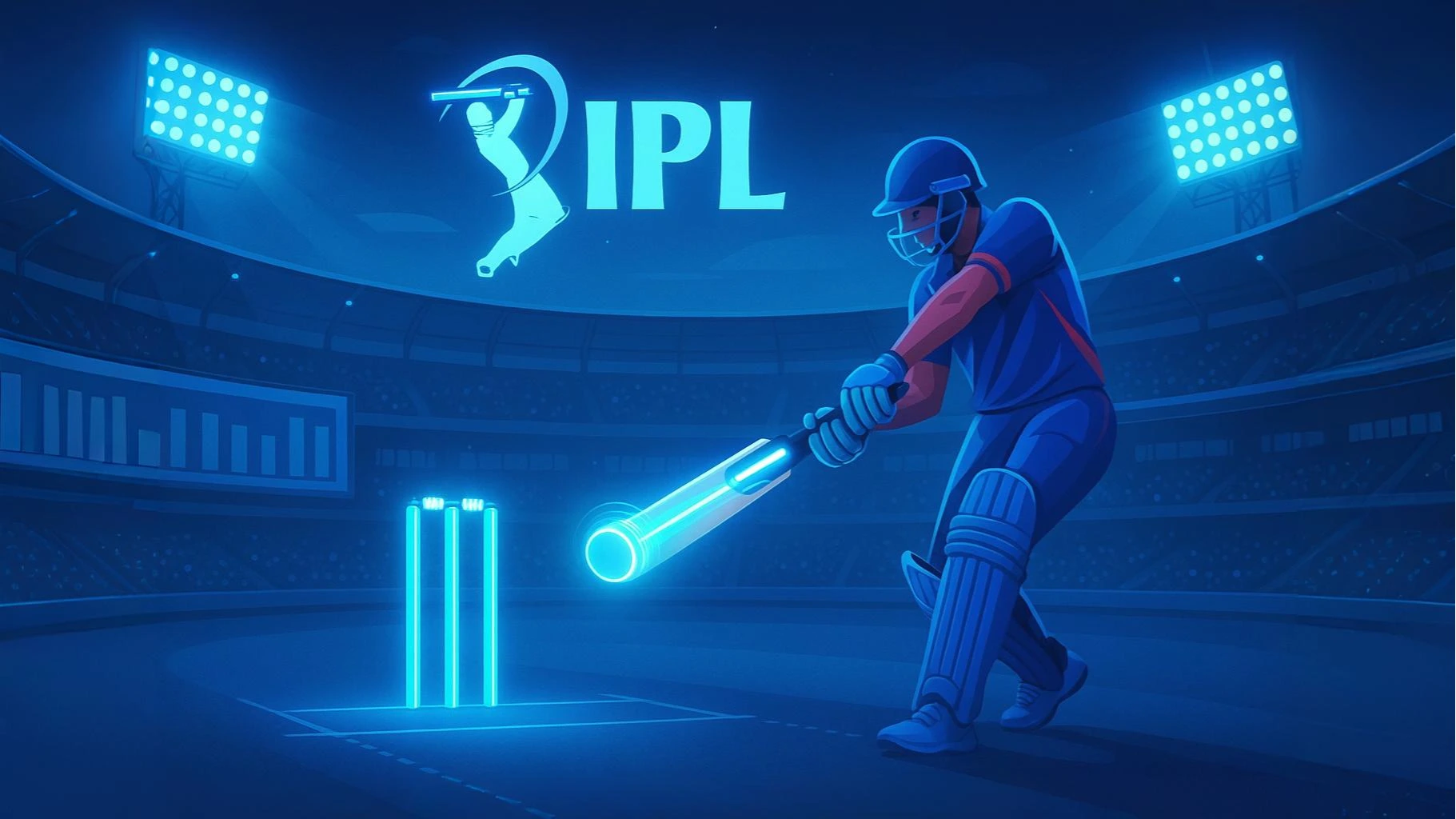Physical Address
304 North Cardinal St.
Dorchester Center, MA 02124

Discover how cutting-edge technologies like AR/VR, AI analytics, and wearable tech are revolutionizing the Indian Premier League in 2025 and beyond.
The Indian Premier League (IPL) has always been at the forefront of innovation in cricket, but the 2025 season is taking technological integration to unprecedented heights. As fans worldwide eagerly anticipate the upcoming season, the fusion of cutting-edge technology with cricket’s traditional appeal is creating a perfect storm of excitement. From immersive viewing experiences to AI-powered analytics, the technological revolution sweeping through IPL 2025 is set to redefine how we experience, analyze, and engage with cricket.
I’ve been following the IPL’s technological evolution for years, and I can confidently say that what we’re witnessing in 2025 is nothing short of revolutionary. The boundary between physical and digital experiences is blurring, creating new opportunities for fans, players, coaches, and organizers alike. Let’s dive into the game-changing technologies that are transforming cricket’s most glamorous tournament.
Table of Contents
ToggleThe days of passively watching cricket matches are rapidly fading as Augmented Reality (AR) and Virtual Reality (VR) technologies transform how fans experience the IPL in 2025.
For fans watching from home, VR technology now offers a stadium-like experience, allowing viewers to virtually transport themselves to premium seats or even experience the game from a player’s perspective. Imagine feeling like you’re standing at the boundary rope or positioned behind the wicketkeeper – that’s the level of immersion VR is bringing to IPL 2025.
Meanwhile, AR is enhancing both broadcast and in-stadium experiences by overlaying real-time statistics, player profiles, and interactive graphics directly onto viewers’ screens. When a batsman hits a six, fans can instantly see the ball’s trajectory, distance, and speed without taking their eyes off the action.
What makes this technological leap particularly significant is the widespread adoption enabled by 5G networks. The high-speed, low-latency connectivity ensures smooth streaming of these data-intensive AR and VR experiences, making them accessible to millions of fans across India and beyond.
Real-time engagement has become the cornerstone of the IPL 2025 viewing experience, with AI-powered platforms creating unprecedented levels of fan participation.
Through dedicated mobile applications and web platforms, fans can now participate in live polls about tactical decisions, predict outcomes of specific deliveries, and engage in trivia contests that test their cricket knowledge – all while watching the match. These interactive elements create a sense of community and shared experience, even for fans watching remotely.
“The introduction of AI-driven engagement platforms has increased viewer retention by 37% compared to previous seasons,” notes Cricket Technology Review, highlighting how technology is not just enhancing the experience but also driving commercial success.
Fantasy cricket integration has reached new heights in 2025, with real-time performance data directly feeding into fantasy platforms. This seamless connection allows fans to track their fantasy teams alongside the actual match, creating an additional layer of excitement and involvement.
What I find particularly impressive is the personalization aspect. The IPL’s AI algorithms now curate content based on individual preferences, ensuring fans receive highlights, statistics, and information most relevant to their interests – whether that’s focusing on a favorite player or tracking specific performance metrics.
For those fortunate enough to attend IPL matches in person, the stadium experience has been completely transformed through smart technology integration.
Gone are the days of paper tickets and long queues. Facial recognition systems and NFC technology now enable frictionless entry into stadiums, significantly reducing wait times and enhancing security. Some venues have reported up to 70% faster entry processes compared to traditional ticketing methods.
Once inside, fans benefit from feature-rich mobile applications that serve as comprehensive guides to the stadium experience. These apps provide interactive maps for navigation, real-time updates on concession stand wait times, and exclusive behind-the-scenes content that isn’t available to TV viewers.
Stadium-wide high-speed Wi-Fi and 5G connectivity ensure that tens of thousands of concurrent users can stream, share, and engage without interruption. This robust network infrastructure supports numerous smart features throughout the venue, from cashless payment systems to personalized push notifications about offers and events.
“The modern cricket fan expects a seamless digital experience at every touchpoint,” explains Rohit Sharma, Technology Director for the IPL. “Our smart stadium initiatives are designed to enhance convenience while creating memorable moments that fans can’t get at home.”
The technical aspects of cricket have been revolutionized by advanced tracking systems that capture every nuance of play with unprecedented precision.
The evolution of Hawk-Eye technology in IPL 2025 has eliminated much of the subjectivity in umpiring decisions. The system now makes objective determinations on wide balls by tracking the ball’s path relative to the batsman’s recorded height and stance, ensuring consistency across all matches and reducing controversial calls.
Player tracking technology has advanced to monitor the real-time position of every individual on the field, creating a comprehensive digital map of the game as it unfolds. This data powers rich statistical graphics that provide fans and analysts with deeper insights into field placements, bowling strategies, and batting techniques.
Biomechanical sensors have become standard equipment for players, capturing subtle details of movement that wouldn’t be visible to the naked eye. For bowlers, these sensors analyze wrist position, arm speed, and shoulder rotation to identify areas for technical improvement. Batsmen benefit from detailed analyses of weight transfer, head position, and bat path.
The resulting data isn’t just academically interesting – it’s transforming coaching approaches across all IPL teams. “The granularity of data we now have access to means we can pinpoint specific technical adjustments that might have taken years to identify through traditional coaching methods,” notes International Cricket Technology Journal.
Artificial Intelligence has emerged as a game-changer for IPL teams in 2025, with sophisticated algorithms processing vast datasets to generate actionable insights.
AI-powered predictive analytics now forecast player performance based on historical data, opponent matchups, venue conditions, and even weather forecasts. These predictions help teams optimize their playing XI and determine batting order based on objective data rather than just intuition.
In the talent scouting domain, AI systems analyze footage from domestic leagues and international matches to identify promising players who might otherwise be overlooked. The algorithms assess technical proficiency, adaptability, and performance under pressure to identify potential IPL stars before they’re on every team’s radar.
One of the most fascinating applications is in match simulation. Teams now use AI to run thousands of virtual scenarios before each game, testing different strategies against their upcoming opponents. These simulations help identify potential weaknesses to exploit and strengths to counter.
“The strategic advantage gained through AI analytics is comparable to what happened in baseball with Moneyball, but at a far more sophisticated level,” says cricket analyst Harsha Bhogle. “Teams that effectively leverage these insights have a measurable competitive edge.”
The physical preparation and monitoring of players has been transformed by advanced wearable technology that provides unprecedented insights into player fitness and performance capacity.
IPL 2025 has seen the widespread adoption of smart clothing with embedded sensors that continuously monitor vital physiological metrics during both training and matches. These high-tech garments track heart rate, muscle activity, movement efficiency, and even hydration levels, creating comprehensive profiles of each player’s physical condition.
GPS-enabled devices measure distance covered, sprint counts, and movement patterns, allowing fitness coaches to optimize training loads and prevent overexertion. The data helps identify fatigue before it manifests as injury, enabling proactive interventions that keep players healthy throughout the grueling IPL schedule.
The integration of this biometric data with AI analysis has enabled the development of highly personalized training and recovery protocols. “Each player’s body responds differently to training stimulus and match stress,” explains Dr. Kiran Shah, head physiotherapist for an IPL franchise. “The wearable technology allows us to fine-tune programs to individual needs, maximizing performance while minimizing injury risk.”
The logistics of managing massive IPL crowds have been streamlined through advanced digital solutions that enhance both security and convenience.
Mobile ticketing has become the standard for IPL 2025, with blockchain technology ensuring ticket authenticity and preventing fraud. This digital approach has virtually eliminated counterfeit tickets while enabling secure peer-to-peer transfers when fans can’t attend matches they’ve purchased tickets for.
AI-powered dynamic pricing adjusts ticket costs based on various factors including team performance, match significance, and real-time demand. This system maximizes revenue while ensuring optimal attendance across all venues and match types.
Biometric authentication, primarily through facial recognition technology, has further enhanced security while speeding up entry processes. Fans need only present themselves at turnstiles where cameras verify their identity against ticketing databases, eliminating the need to display tickets or identification.
“The transformation from physical to digital ticketing represents one of the most significant operational improvements in IPL history,” notes stadium operations expert Amit Patel. “It’s reduced staffing requirements by 30% while improving the fan experience through faster entry.”
Safety and security have been prioritized through cutting-edge technology that protects players, staff, and spectators throughout the IPL 2025 season.
AI-assisted surveillance systems continuously monitor crowd movements and behaviors, identifying potential security concerns before they escalate. These systems can detect unusual gatherings, recognize patterns that might indicate trouble, and alert security personnel to investigate.
Drone technology provides aerial surveillance of venue perimeters and parking areas, offering comprehensive situational awareness that wasn’t possible with traditional security approaches. These drones are equipped with high-resolution cameras and can transmit real-time footage to central command centers.
Advanced weapons detection systems using millimeter wave technology screen attendees without creating bottlenecks at entry points. Unlike traditional metal detectors, these systems can identify specific threat objects while ignoring harmless items, improving both security effectiveness and entry efficiency.
The integration of these technologies into a unified security infrastructure represents a significant advancement over the fragmented approaches of previous years. “We’ve moved from reactive security to predictive security,” explains IPL Security Director Rajiv Kumar. “The technology allows us to anticipate and prevent issues rather than simply responding to them.”
The IPL has made significant strides in environmental responsibility through technology-driven sustainability initiatives throughout the 2025 season.
AI systems now monitor and optimize resource usage across all venues, resulting in substantial reductions in energy consumption, water usage, and waste generation. Smart lighting systems adjust illumination based on natural light conditions and specific requirements for broadcasting, reducing electricity consumption by up to 40% compared to traditional stadium lighting.
Solar installations at multiple IPL venues now generate clean energy that powers significant portions of stadium operations. The Chennai stadium leads the way with a solar array that meets 70% of its energy needs during daytime matches.
Comprehensive waste management systems have been implemented across all venues, with AI-powered sorting technology ensuring maximum recycling efficiency. Some stadiums have achieved impressive 85% diversion rates from landfill through these initiatives.
“Cricket has always been tied to environmental conditions, so it’s fitting that the IPL is taking a leadership role in sustainability,” notes environmental consultant Priya Sharma. “The technological innovations we’re seeing in 2025 demonstrate that commercial success and environmental responsibility can go hand in hand.”
Looking beyond 2025, several emerging technologies are poised to further transform the IPL experience in coming seasons.
Holographic technology is being developed to potentially create 3D replays and analysis that viewers can explore from multiple angles. Early prototypes suggest this could be ready for limited implementation by the 2027 season.
Quantum computing applications are being explored for even more sophisticated performance analytics, potentially processing datasets that are currently too complex for conventional computing systems.
Neural interfaces, while still in early research phases, hold the potential to provide unprecedented insights into player decision-making processes and reaction times. These technologies might eventually allow coaches to understand not just what players do but how they think during crucial moments.
“The pace of technological change in cricket is accelerating,” observes technology futurist Vikram Mehta. “What seems cutting-edge today will be standard within a few seasons, and entirely new capabilities we haven’t even conceived of yet will emerge.”
The technological transformation of the IPL in 2025 represents a watershed moment for cricket. From the enhanced fan experience through AR/VR to the sophisticated player analytics powered by AI, from the streamlined operations behind the scenes to the commitment to sustainability, technology has touched every aspect of the league.
What makes these advancements particularly significant is how they’ve maintained the essential character of cricket while enhancing both the playing and viewing experience. Technology hasn’t replaced the human elements that make cricket special – it’s amplified them, bringing new dimensions to a sport with centuries of tradition.
As we look toward future seasons, the potential for further innovation seems boundless. The question isn’t whether technology will continue to transform the IPL, but how quickly new capabilities will emerge and what novel experiences they’ll create for everyone involved with cricket’s most dynamic league.
What aspect of IPL 2025’s technological revolution are you most excited about? Share your thoughts in the comments below, and let’s discuss how these innovations might shape the future of cricket!

Subscribe to our weekly newsletter below and never miss the latest product or an exclusive offer.




